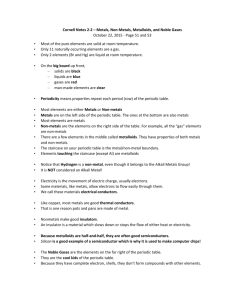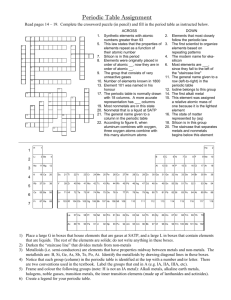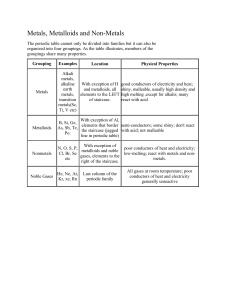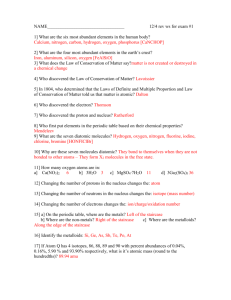Families of the Periodic Table
advertisement
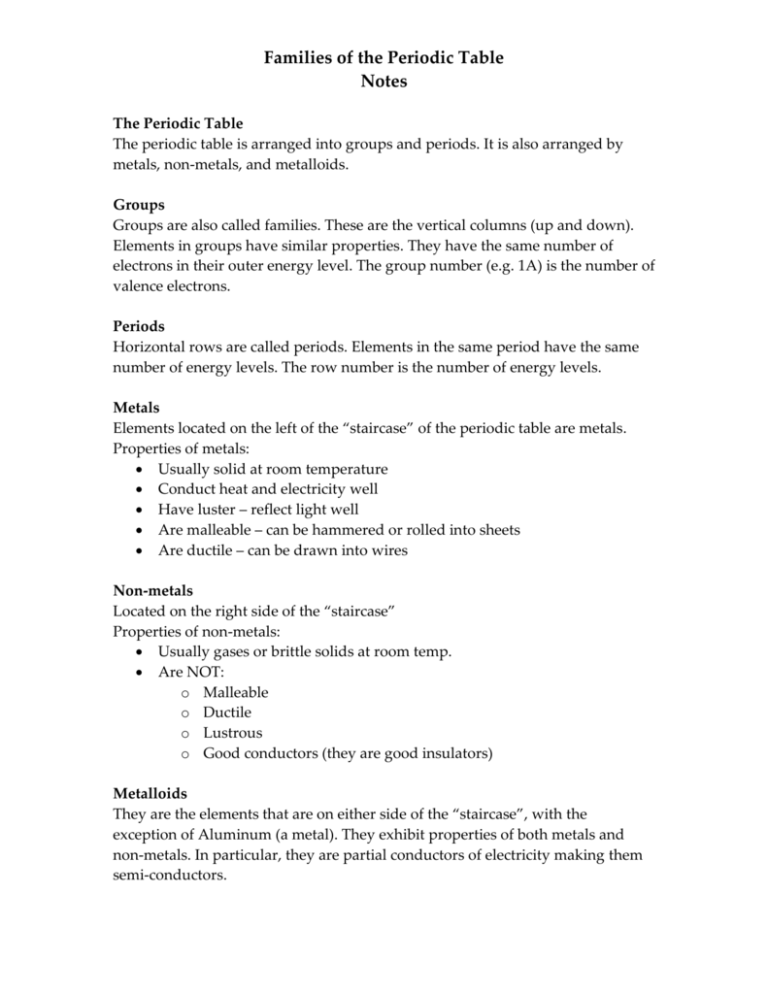
Families of the Periodic Table Notes The Periodic Table The periodic table is arranged into groups and periods. It is also arranged by metals, non-metals, and metalloids. Groups Groups are also called families. These are the vertical columns (up and down). Elements in groups have similar properties. They have the same number of electrons in their outer energy level. The group number (e.g. 1A) is the number of valence electrons. Periods Horizontal rows are called periods. Elements in the same period have the same number of energy levels. The row number is the number of energy levels. Metals Elements located on the left of the “staircase” of the periodic table are metals. Properties of metals: Usually solid at room temperature Conduct heat and electricity well Have luster – reflect light well Are malleable – can be hammered or rolled into sheets Are ductile – can be drawn into wires Non-metals Located on the right side of the “staircase” Properties of non-metals: Usually gases or brittle solids at room temp. Are NOT: o Malleable o Ductile o Lustrous o Good conductors (they are good insulators) Metalloids They are the elements that are on either side of the “staircase”, with the exception of Aluminum (a metal). They exhibit properties of both metals and non-metals. In particular, they are partial conductors of electricity making them semi-conductors. In summary: Things that you can tell about elements by looking at the periodic table: 1) Name 2) Symbol 3) # of Protons, Neutrons & Electrons 4) Number of energy levels 5) Number of electrons in the outer energy level 6) Metals, Non-metals, or metalloids Families of the Periodic Table The main families (groups) are: 1) The Alkali Metals 2) The Alkaline Earth Metals 3) The Halogens 4) The Noble Gases 5) The Transition elements The Alkali Metals (Group 1A) Softer and more reactive than other metals Highly reactive with Oxygen and water Do not occur naturally in the elemental form Combine (bond) readily with other elements. Why? Because they have only 1 valence electron Alkaline Earth Metals (Group 2A) Not found naturally in elemental form They are denser, harder, and have a higher melting point than alkali metals. Two valence electrons Halogens (Group 7B) Form salts when gaining 1 electron from a metal (ex. sodium chloride). Bond well with the Alkali Metals. Why? Because it needs ONE electron to fill its outer shell Noble Gases (Group 8B) Exist as isolated, stable atoms This is because they completely fill their outer energy level. Do not bond with other elements (there are some rare exceptions, usually only occurs in laboratories) Transition Elements (Groups 3 – 12) Metals Found in the middle of the Periodic Table Often occur in nature as uncombined elements Typically form colored compounds Include the inner transitions metals Inner Transition Elements Metals Located at the bottom of the chart Contain 2 main groups: o The Lanthanides (Rare-earth elements) o The Actinides Located “off” the chart to allow the Periodic Table to fit better. Typically exist in combined forms with other elements, or, they are formed in laboratories. These elements are radioactive
